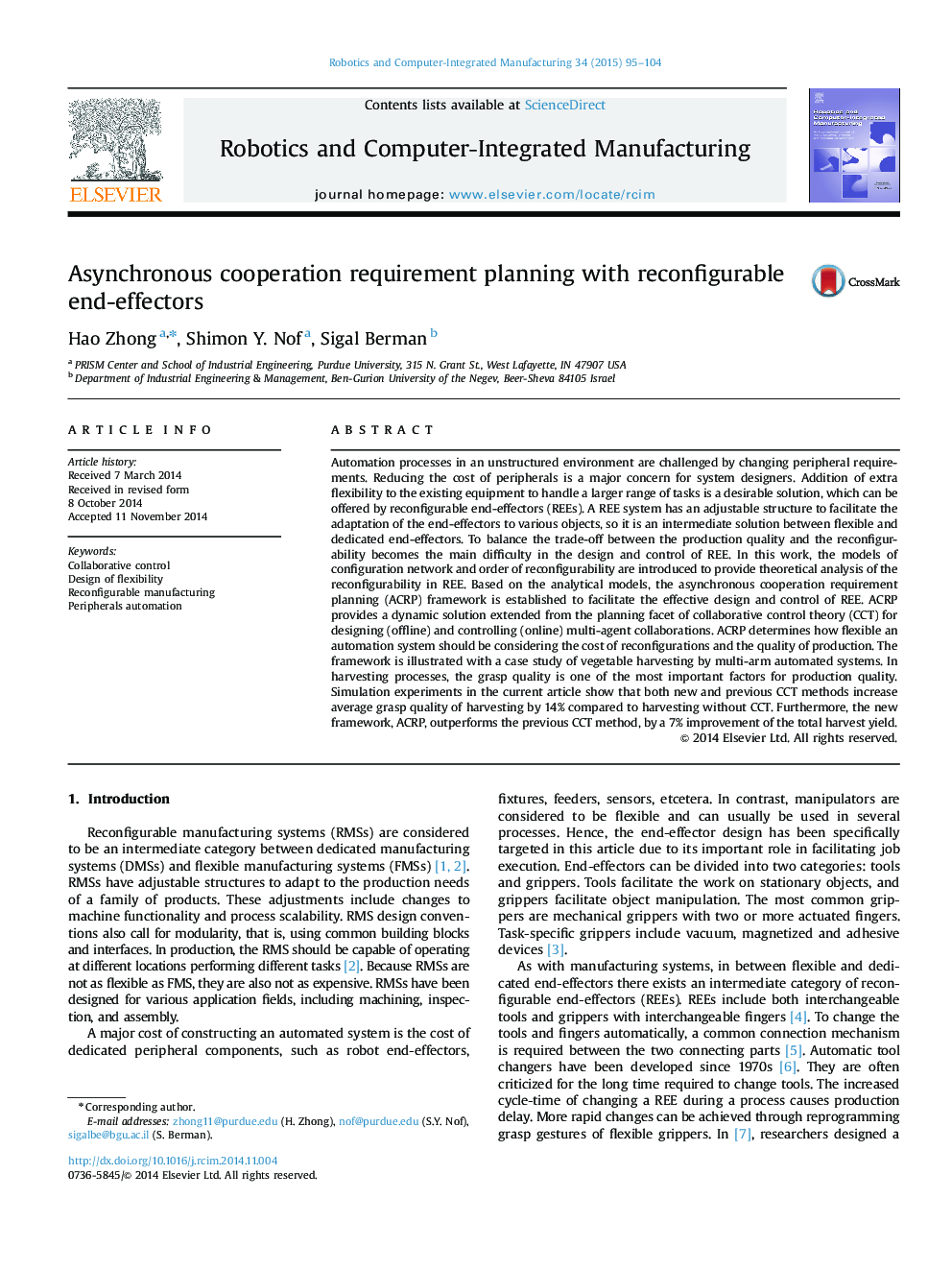| کد مقاله | کد نشریه | سال انتشار | مقاله انگلیسی | نسخه تمام متن |
|---|---|---|---|---|
| 413940 | 680752 | 2015 | 10 صفحه PDF | دانلود رایگان |
• Design of reconfigurable end-effectors system for flexibility and cost-savings
• Analyze reconfigurability based on configuration network and its structure
• Balance the trade-off between the production quality and system reconfigurability
• Control reconfigurable system by collaborative multi-agent asynchronous planning
• Case study on grasping quality and yields in robotic harvesting
Automation processes in an unstructured environment are challenged by changing peripheral requirements. Reducing the cost of peripherals is a major concern for system designers. Addition of extra flexibility to the existing equipment to handle a larger range of tasks is a desirable solution, which can be offered by reconfigurable end-effectors (REEs). A REE system has an adjustable structure to facilitate the adaptation of the end-effectors to various objects, so it is an intermediate solution between flexible and dedicated end-effectors. To balance the trade-off between the production quality and the reconfigurability becomes the main difficulty in the design and control of REE. In this work, the models of configuration network and order of reconfigurability are introduced to provide theoretical analysis of the reconfigurability in REE. Based on the analytical models, the asynchronous cooperation requirement planning (ACRP) framework is established to facilitate the effective design and control of REE. ACRP provides a dynamic solution extended from the planning facet of collaborative control theory (CCT) for designing (offline) and controlling (online) multi-agent collaborations. ACRP determines how flexible an automation system should be considering the cost of reconfigurations and the quality of production. The framework is illustrated with a case study of vegetable harvesting by multi-arm automated systems. In harvesting processes, the grasp quality is one of the most important factors for production quality. Simulation experiments in the current article show that both new and previous CCT methods increase average grasp quality of harvesting by 14% compared to harvesting without CCT. Furthermore, the new framework, ACRP, outperforms the previous CCT method, by a 7% improvement of the total harvest yield.
Journal: Robotics and Computer-Integrated Manufacturing - Volume 34, August 2015, Pages 95–104
